Once the molds have been delivered to the foundry, the process begins in the wax room. Here, the molds are painted with wax, building up a thickness of 1/4″ – 3/8″ thick. The wax is removed from the mold, creating a wax duplicate of the original sculpture. To recap, we had the original sculpture (a positive), the rubber and plaster mold (a negative), now the wax is another positive.
 Wax sprues or channels are added (shown in bright red wax) to aide in casting so that the bronze will flow smoothly. They will be removed once cast.
Wax sprues or channels are added (shown in bright red wax) to aide in casting so that the bronze will flow smoothly. They will be removed once cast.
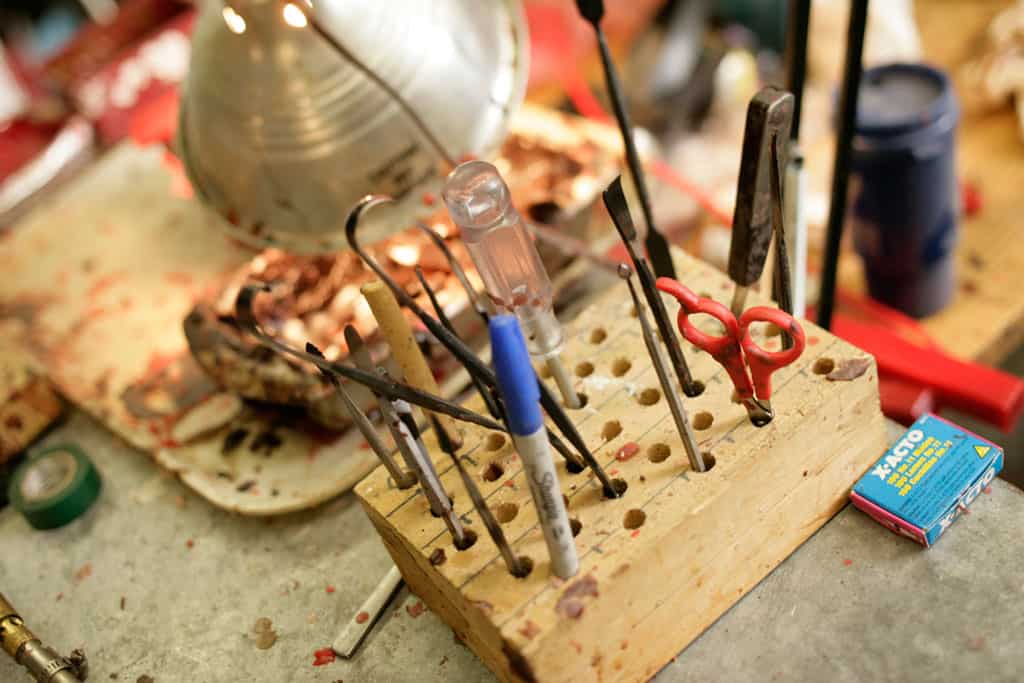 Various tools are used to attach the wax sprues to the wax figure.
Various tools are used to attach the wax sprues to the wax figure.
Next stop, the ceramic room.
The assemblage is dipped in a liquid ceramic slurry.
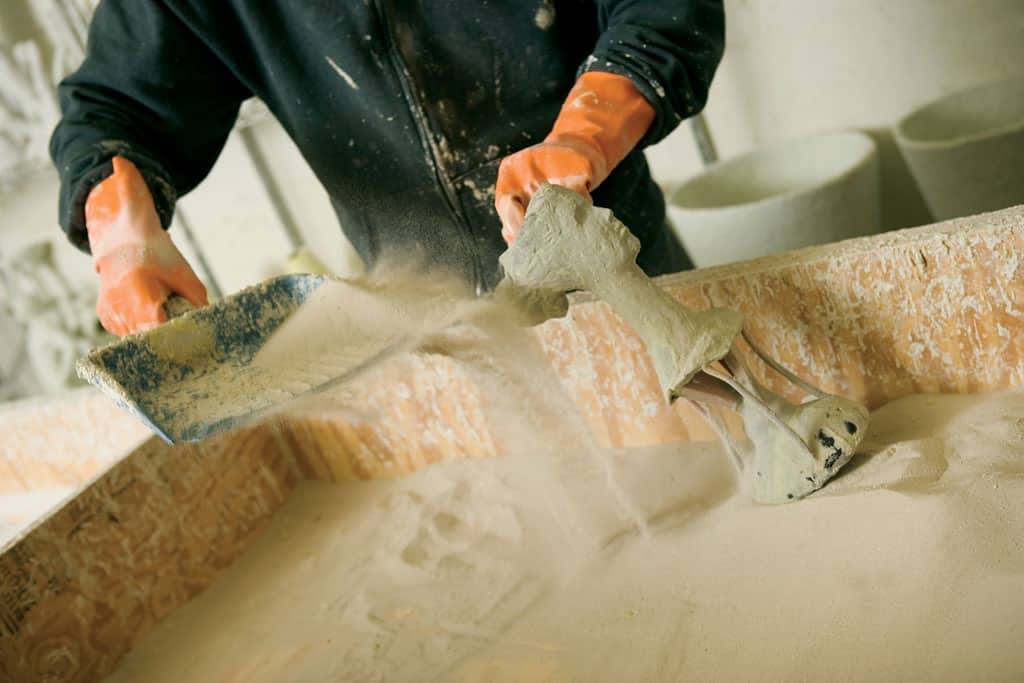 Sand is poured over the assemblage, starting with a very fine sand, picking up all of the super fine details.
Sand is poured over the assemblage, starting with a very fine sand, picking up all of the super fine details.
The repetition of ceramic slurry coated in sand is repeated 10-14 times, building a ceramic shell around the wax piece, allowing it to dry between each coat. Wax pieces encased in ceramic are shown in various stages of ceramic shell. As the coats increase, the coarseness of the sand also increases. The ceramic shell is our next “negative” in the casting process. We went from positive (original sculpture), negative (rubber and plaster mold), positive (wax cast) and now negative with the ceramic mold.
The ceramic mold is a one-time use mold. For each casting in the edition, we’ll start back in the wax room with the artist’s rubber and plaster mold. Next it will be on to the foundry to heat it up, literally.
Now we’ve made it to actual bronze casting, the most intriguing step in the foundry process, where the term “lost wax casting” comes from.
Bronze ingots are placed in a large crucible.
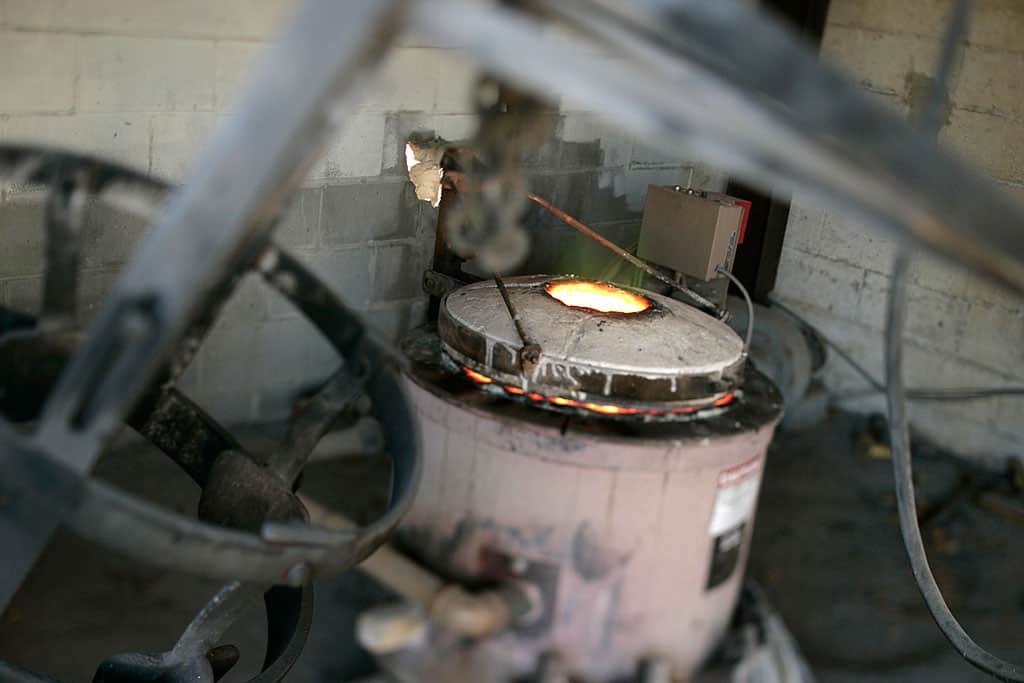 The crucible is placed in a furnace where the ingots will be melted to a temperature of approximately 1900 ° F.
The crucible is placed in a furnace where the ingots will be melted to a temperature of approximately 1900 ° F.
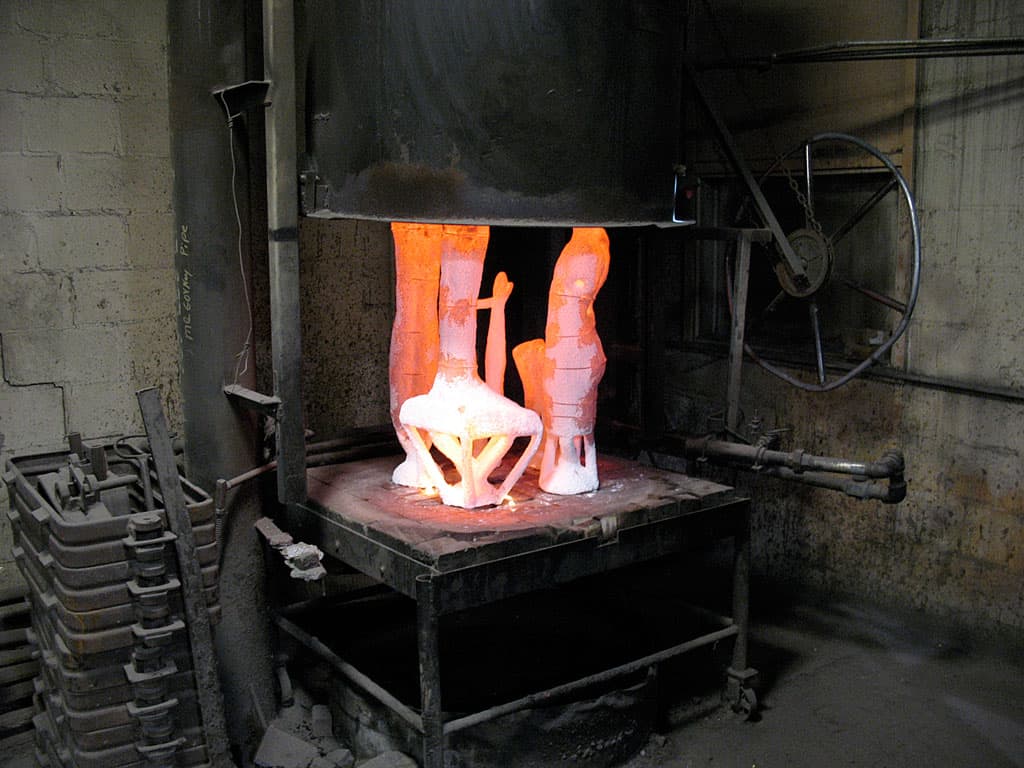 Lost wax casting The wax, encased in ceramic shell, is heated in a kiln. The wax is melted out, leaving an empty ceramic mold ready to receive the molten bronze.
Lost wax casting The wax, encased in ceramic shell, is heated in a kiln. The wax is melted out, leaving an empty ceramic mold ready to receive the molten bronze.
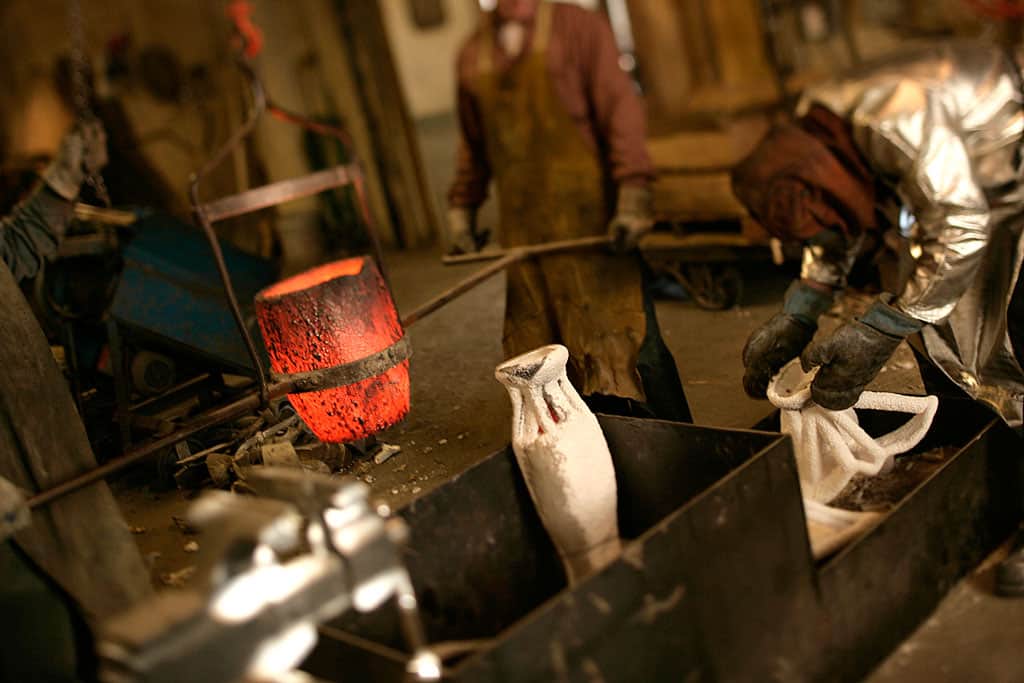 The ceramic molds are placed in sand beds that keep the molds upright.
The ceramic molds are placed in sand beds that keep the molds upright.
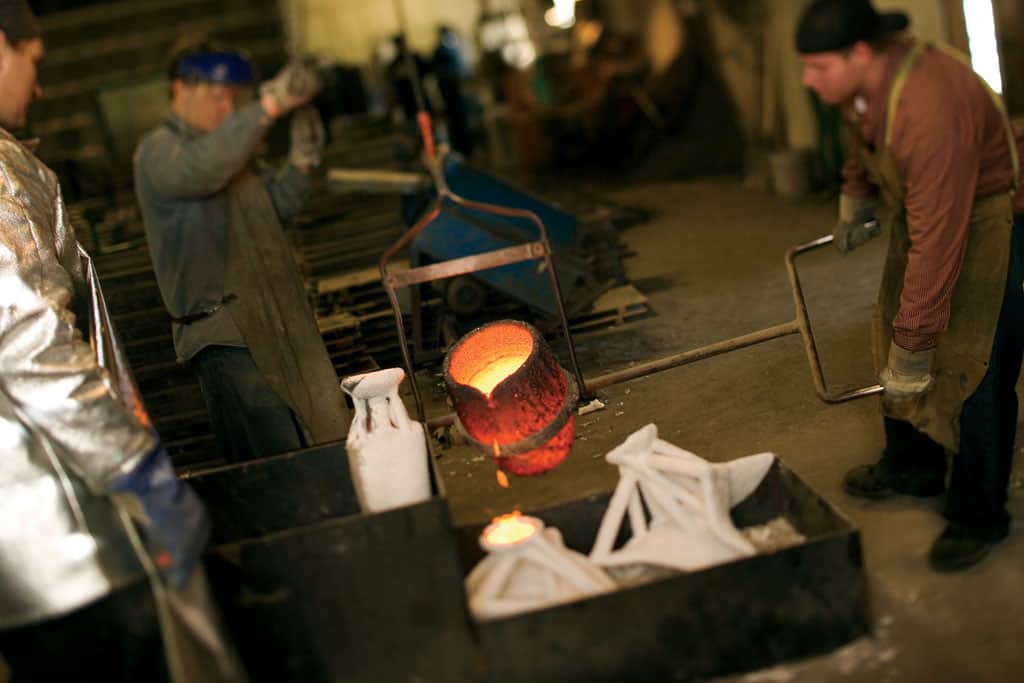 A highly choreographed and careful team sets up to pour the molten bronze.
A highly choreographed and careful team sets up to pour the molten bronze.
The bronze will cool inside the ceramic mold.
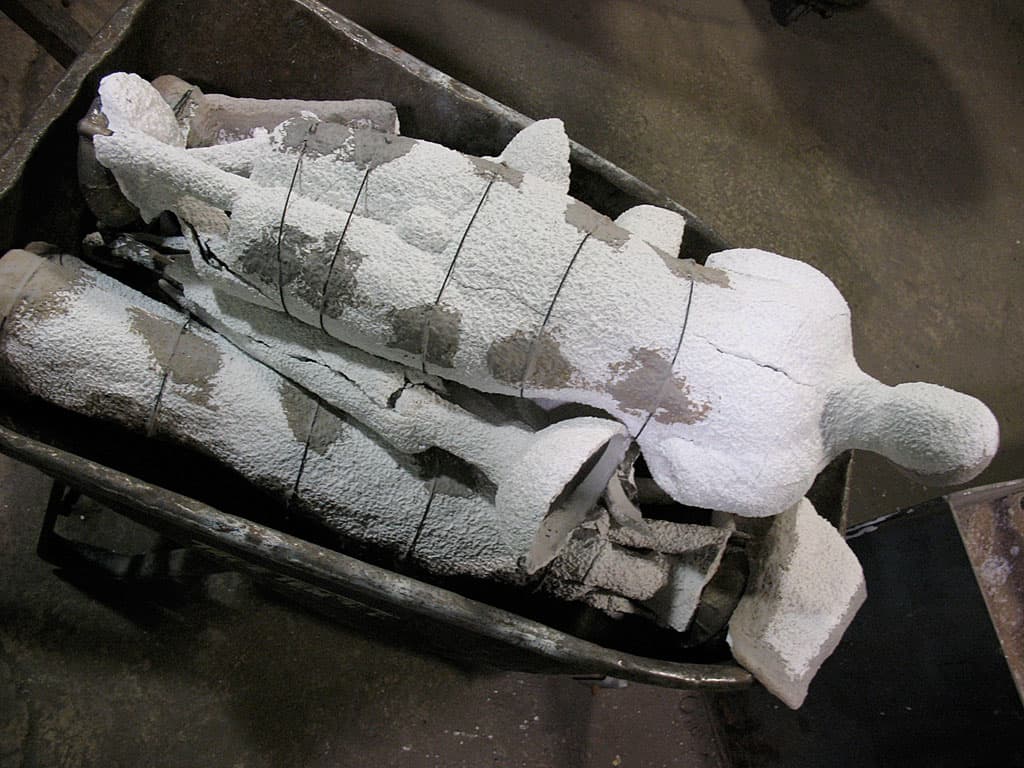 As the bronze cools, the mold will even begin to split due to the change in temperature.
As the bronze cools, the mold will even begin to split due to the change in temperature.
Bronze hammers and mallets are used to carefully chip away the ceramic shell.
Everything that was wax is now bronze, including the sprues or channels. This is an example of Man I (a tall sculpture), which is about 6′ tall once assembled. See the finished piece, Man I.
The rough bronze casting is fully revealed and sprues are carefully removed. Chasing tools are used on a medium size sculpture, Man Study. See the finished piece, Man Study.
“In the finishing area, opaque barriers shield the eyes from welding torch sparks. This is where pieces are meticulously matched to the original, and any deviations are carefully reworked to reconcile the finished piece to the artist’s initial intent. In this way, every piece, even in a series, is truly an original.” (an excerpt from Tom Corbin The Inevitable Artist by Beverly Bellinger).
Most sculptures larger than about 20″, depending on the form, are cast in several parts. Skilled artisans at the foundry will carefully weld the pieces together leaving no visible seam.
Woman I is shown being assembled. See the finished piece, Woman I.
Read an excerpt about the foundry from our book HERE
Continue to The Process of Bronze – Patina
